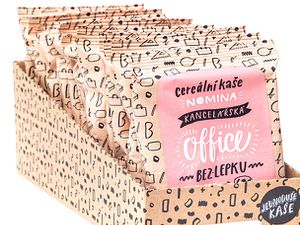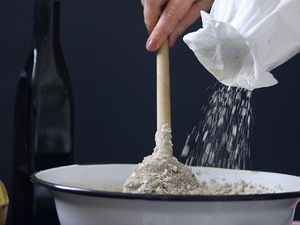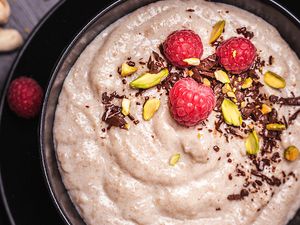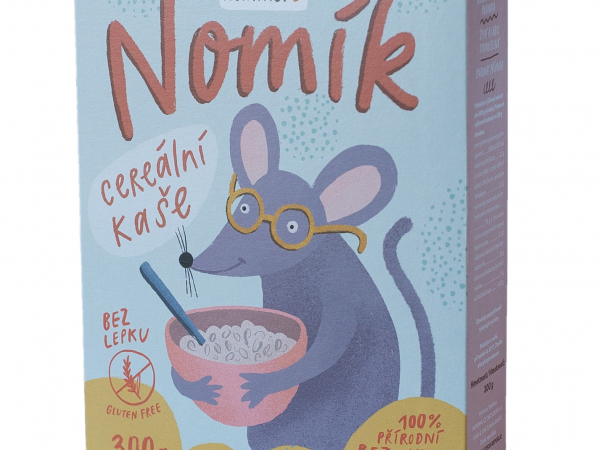Nomina cereal porridge. That is the name of each one of our Nominal porridges. The word “cereal” might sound completely trivial to some, but others might get lost in the forrest of various cereal cereals. We have had a number of our customers asking for the cereal porridge. When we explained that all of them were cereal, both sides could have a laugh about it. Without further ado, cereal is a synonym for grain. And there is a large variety of grains available.
Spelt
As an agricultural company, we have been dealing with spelt wheat cultivation for years. And is it quite possible that you have known it for yers in the form of the popular Nomina Spelt porridge. You can also find wholegrain spelt in Nomina Barley and in the single-serving Nomina Outdoor. We cooperate with a mill to be able to offer you finely milled wholegrain spelt flour by NOMINAL.
How exactly does spelt find its way onto your table?
The cradle of spelt wheat is the so called fertile crescent, the Southwest Asia where the origins of agriculture as such are traced by the scientists. Or more precisely, the predecessor of the present day agriculture.The first spelt findings in the European region date as far back as the early Stone Age. It has grown in popularity in various European countries over the centuries. However, due to low agricultural output and the necessary dehusking, spelt started being gradually forced out of prominence by common wheat at the beginning of the 20th century. It was happening even in regions where spelt had been dominant, such as the harsh conditions of the Alpine countries of Switzerland, Austria or southern Germany. Spelt cultivation basically came to a halt after the Second World War. Our region has historically only seen sporadic spelt cultivation with no variety of spelt permitted after the year 1918.Cultivation of the husked wheat crops started being renewed even in our region in the 1990s with an ever-growing cultivated area. The most prominent is spelt wheat. Its qualities and the interest of consumers have made spelt an alternative for cultivation in ecological agriculture. That is why spelt BIO products are so common.
How does spelt differ from common wheat?
The spelt wheat belongs among the husked grains. In case you do not remember from shool, we will have a little reminder. The spelt seed inner part consists of an endosperm with a floury germ (mainly stored starch) surrounded by an aleurone layer (with presence of protein). The husk layers are on the surface. Being husked means that the grain remains covered in the husk layers even when harvested. Harvested spikelets must be dehusked. Dehusked grains represent about 50-60% of harvested spikelets.
There is about 14-19% protein content in spelt, which is higher than in the common wheat. As for the amino acid profile, that is basically identical to the common wheat. The gluten content is comparable or higher.
The spelt fat contains a high percentage of unsaturated fatty acids. Much like the common wheat, spelt is a source of B vitamins (B1, B2, niacin,…) and vitamin E. It also contains minerals, such as phosphorus, potassium, iron, zinc, manganese, magnesium and others. Their contents is, of course, dependant on the conditions of cultivation.
The dietary fibre contained in the wholegrain spelt flour has long strands, and thus it is easily tolerated by the body and supports the intestinal peristalsis as well as digestion.
Spelt has a long tradition of being valued for its good digestibility and stimulating effect on the immune system. Spelt contains gluten making it absolutely unsuitable for coeliacs. Even though chemically it is an alternative to the common wheat, in some cases it is surprisingly tolerated by individuals allergic to gluten.
The wholegrain spelt flour has a pleasant nutty taste, and its excellent baking properties make it technologically suitable for preparing various baked products.
Its broad processing options make it possible to find spelt in various products nowadays: flours, grits, groats, bulgur, speltotto, extruded products, muesli, pasta, bread and other baked products or coffee substitutes.
The fact that spelt is stored in the form of husked spikelets up until processing has a positive impact on product quality. The spelt seed is tightly wrapped in the husks making it efficiently protected against “insect attacks”, fungal diseases (moulds) and other negative influences.
Source: Pěstování vybraných plodin v ekologickém zemědělství, editor doc., Ing. Petr Konvalina, PhD., kolektiv autorů







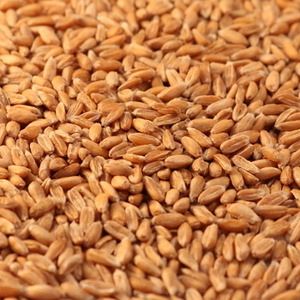
.png)
.png)

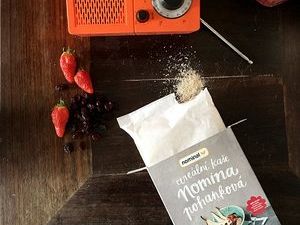

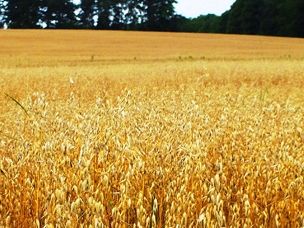
.jpg)
